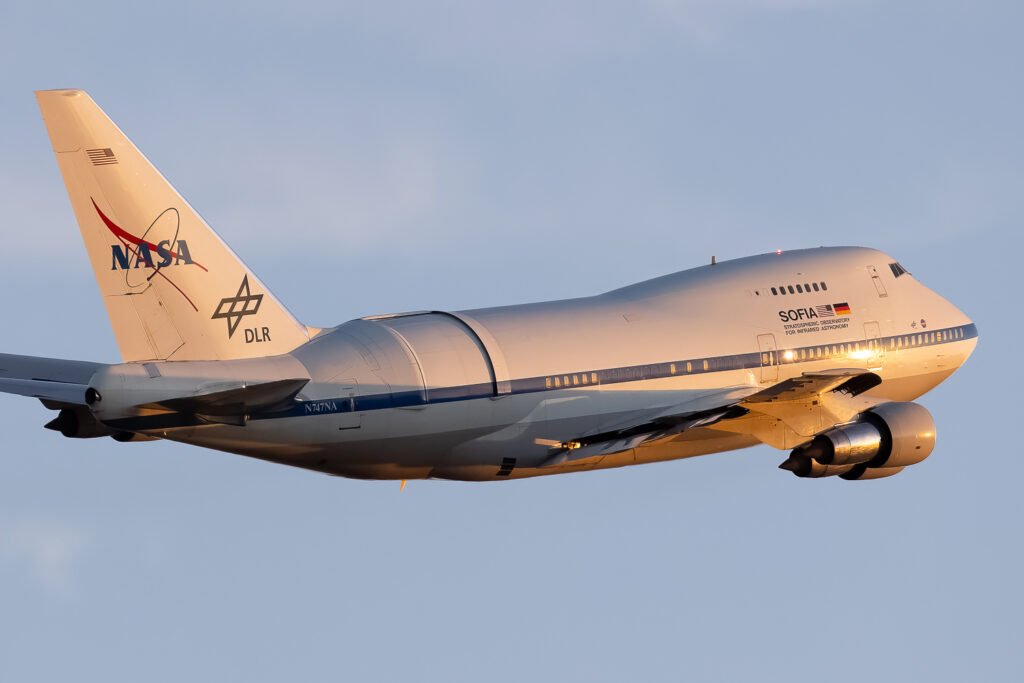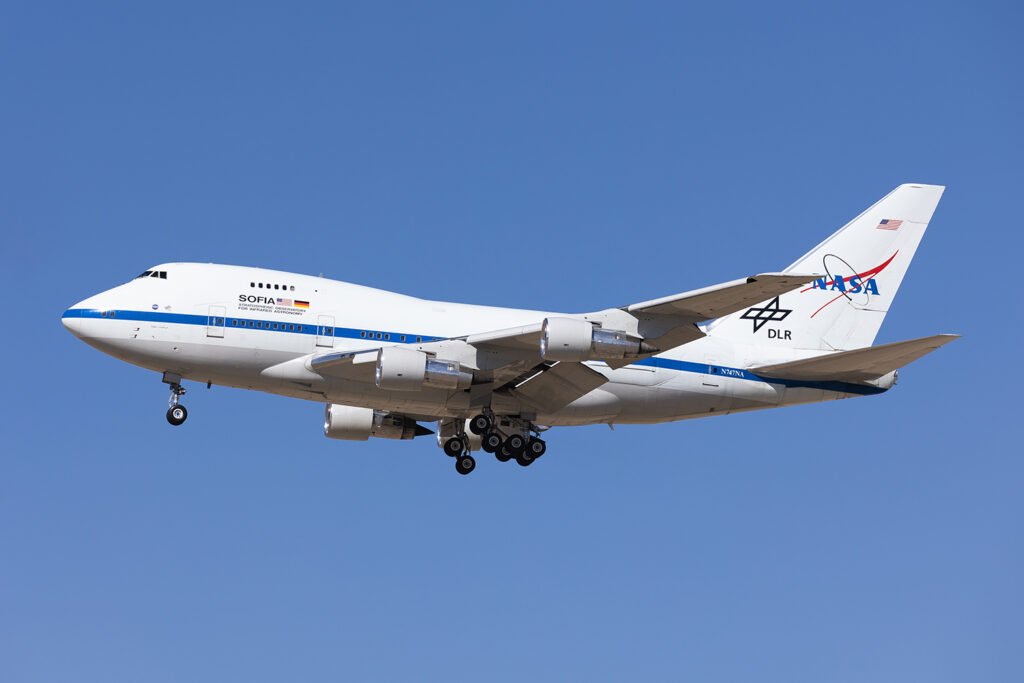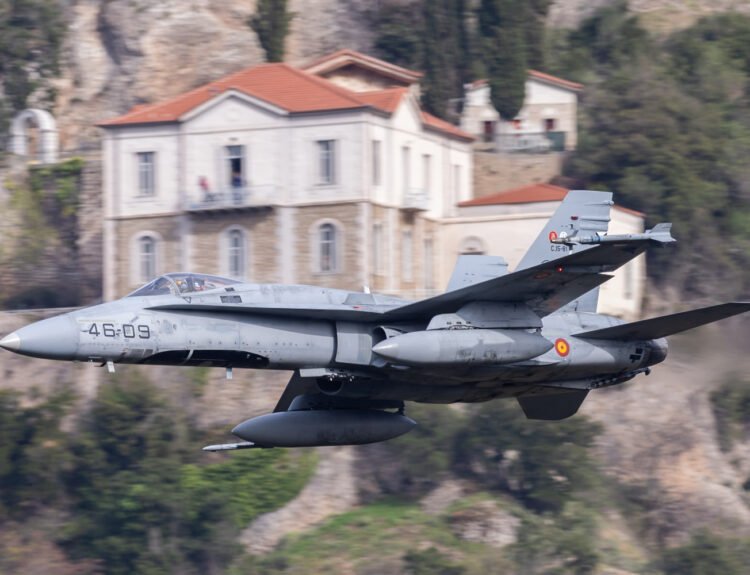NASA has officially retired the Stratospheric Observatory for Infrared Astronomy (SOFIA), fter a decade of the unique airborne observatory, which used a repurposed Boeing 747SP to conduct astronomical research from the sky. SOFIA retired after more than a decade of groundbreaking observations and advances in understanding the universe.

Launched into service in 2010 through a partnership with the German Aerospace Center (DLR), SOFIA was equipped with a 2.5-meter telescope mounted in the fuselage of the aircraft. This innovative setup allowed scientists to explore the infrared spectrum of celestial objects, bypassing much of the interference caused by Earth’s atmosphere.
“SOFIA has been a remarkable asset for astronomical research, providing unique insights into the formation of stars, the composition of galaxies, and the presence of water on distant planets,” said Dr. Paul Hertz, Astrophysics Division Director at NASA Headquarters. “The knowledge gathered from SOFIA’s flights has significantly expanded our understanding of the cosmos.”

Over its flight life, SOFIA enlisted the help of scientists and astronomers to collect data on numerous phenomena within astronomy, like the formation of stars, dark matter, and exoplanet behavior, often in coordination with researchers around the world. The observatory successfully carried out over 1,100 flight missions and collected valuable data from our solar system and also outside it.
As SOFIA took off on its last flight from NASA’s Armstrong Flight Research Center in California, several NASA officials, scientists, and retired astronauts had gathered to celebrate the legacy of the aircraft. With emotional tributes and memories, visitors remembered SOFIA’s tremendous contributions to science.

“SOFIA has not only transformed the way we study the universe but has also encouraged a new generation of scientists and inspired interest in astronomy and aerospace,” said Dr. Christine Chen, a leading astronomer involved in the program. “This legacy is something that we will carry with us as we go on to new technologies and methods in the pursuit of discovery.”
SOFIA’s retirement was motivated by fiscal and priority moves toward other missions in astronomy, including space-based telescopes and emerging technologies at observatories. As NASA proceeds, the space agency remains committed to harnessing innovative technologies in order to resolve fundamental questions in the universe.

Data captured during SOFIA’s career as a plane will continue to be studied for generations to come, the impact of its work never to be forgotten. Extended preservation of the plane is being conducted, with prospects for having it placed in a space research and astronomy-themed museum nearby.
While NASA bid farewell to SOFIA, astronomers and scientists wait for the next installment in astronomical observation, with continuous efforts to find out about the universe and decipher the mystery of deep space.






